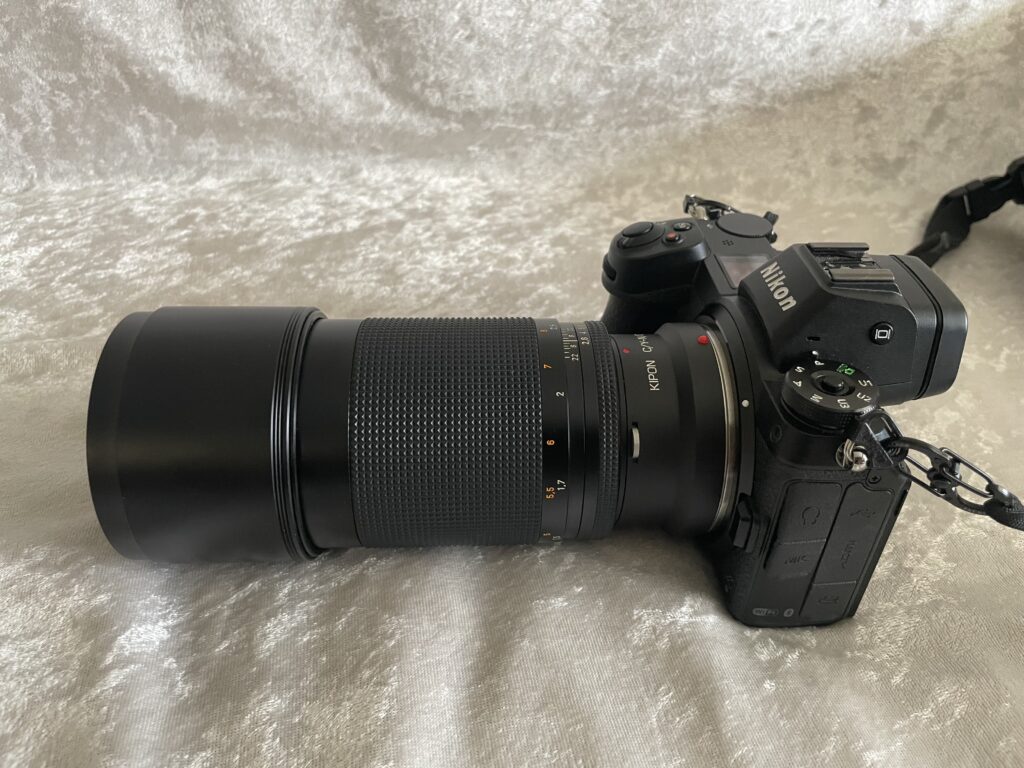
This is a lens I love shooting with. I originally began shooting the 180mm focal length years ago when I was introduced to the Nikon 180mm f2.8D AF lens. There’s something about 180mm at f2.8 that has always been magical for portraits. I suppose it’s kind of like shooting with a 300mm f2.8 without all of the weight and slightly less compression. That being said, I’d take this CONTAX lens over the Nikon version any day for two main reasons; Much less CA, and much better color straight out of the camera.
Bokeh
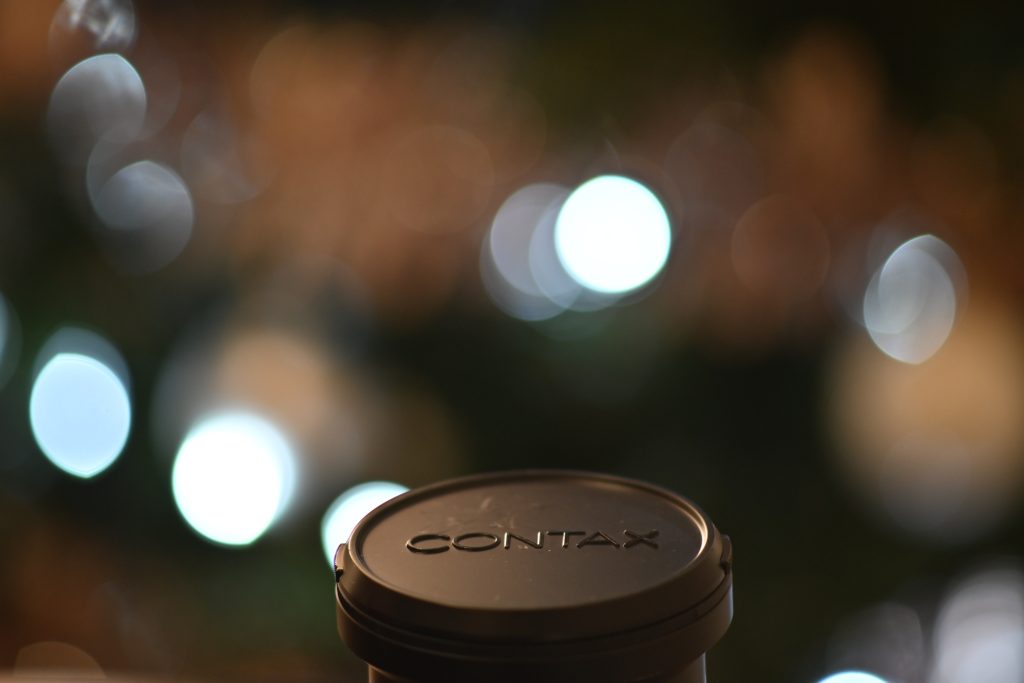
This was a handheld shot of a Contax lens in front of my Christmas tree. The tree is 3ft behind the lens shown. Backgrounds just melt away at 180mm & f2.8. There is a touch of spherochromatism in the bokeh of this image. Nothing I’d really worry about though, as this is an extreme case at MFD, which really magnifies the bokeh balls in the image. There is the slightest amount of purple fringing just to the left of the cap when you click on the image and zoom in; also nothing to worry about. This image is unedited and that’s easily fixable in post.
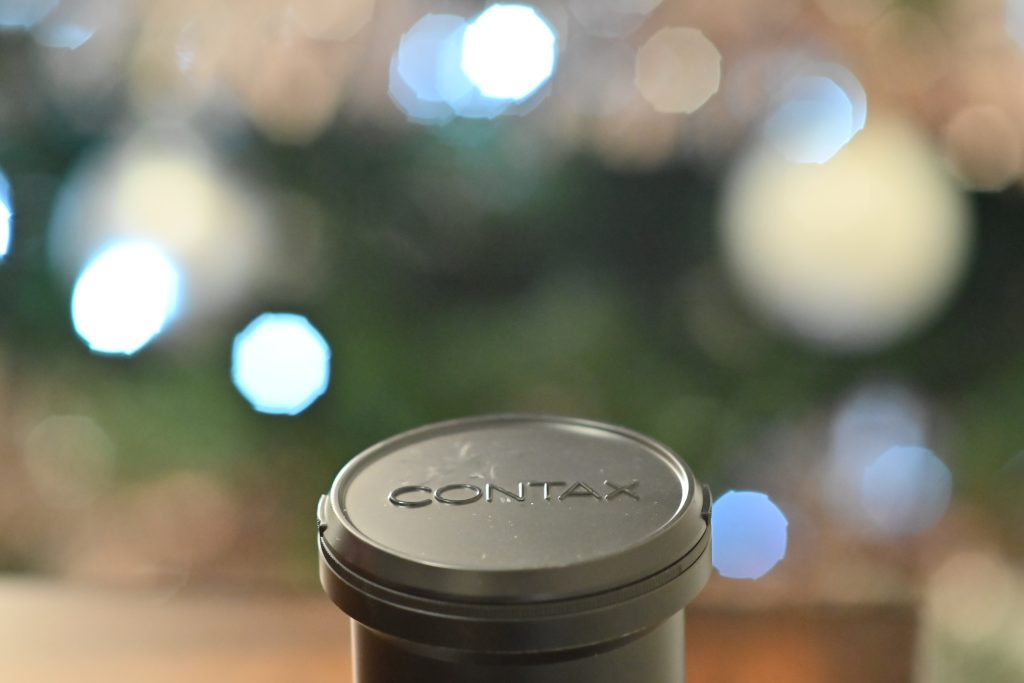
My version of this lens is the AE version that exhibits ninja-star bokeh. Notice the odd ninja-star shape. It occurs at f4, and starts to clean up in the center by f5.6, although can still be seen in corner bokeh balls, as in the photo below.
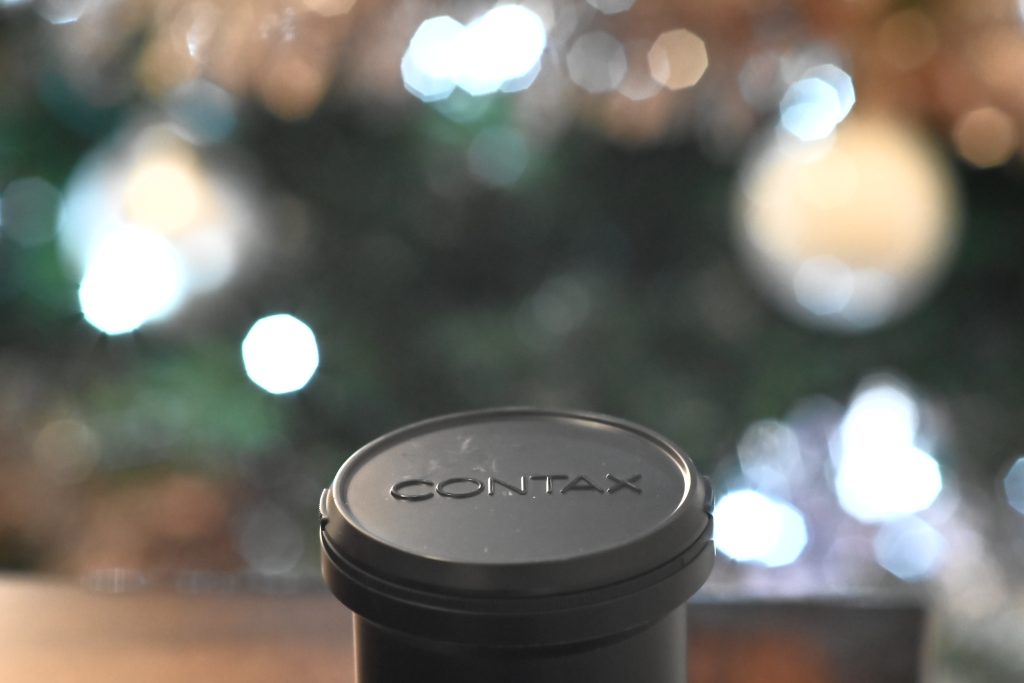
Check out current Ebay prices below:
Accurate colors has always been my main reason for shooting with vintage CONTAX Zeiss glass, and the 180mm f2.8 doesn’t disappoint. All of the images below were shot in raw and then converted to jpeg in Adobe Lightroom. No editing has occurred. Many cameras remove CA automatically if you shoot in jpeg so I like to shoot in raw for accurate reviews. Check out the accurate colors in these flowers below:
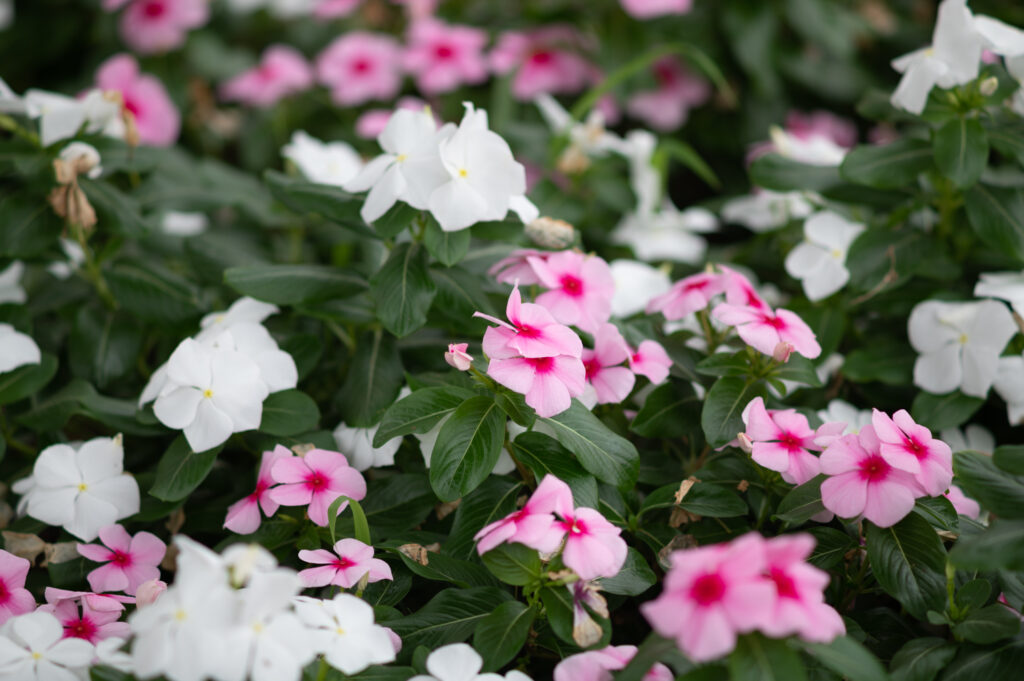
Green appears nice and deep, white is white, and the pink flowers are exactly how they appeared to my eye when I shot the pic. Nikon lenses on the other hand always appear cooler, and I find myself always working the sliders in Lightroom trying to reproduce what my eye saw at the time of taking the pic. Not a problems with CONTAX lenses.
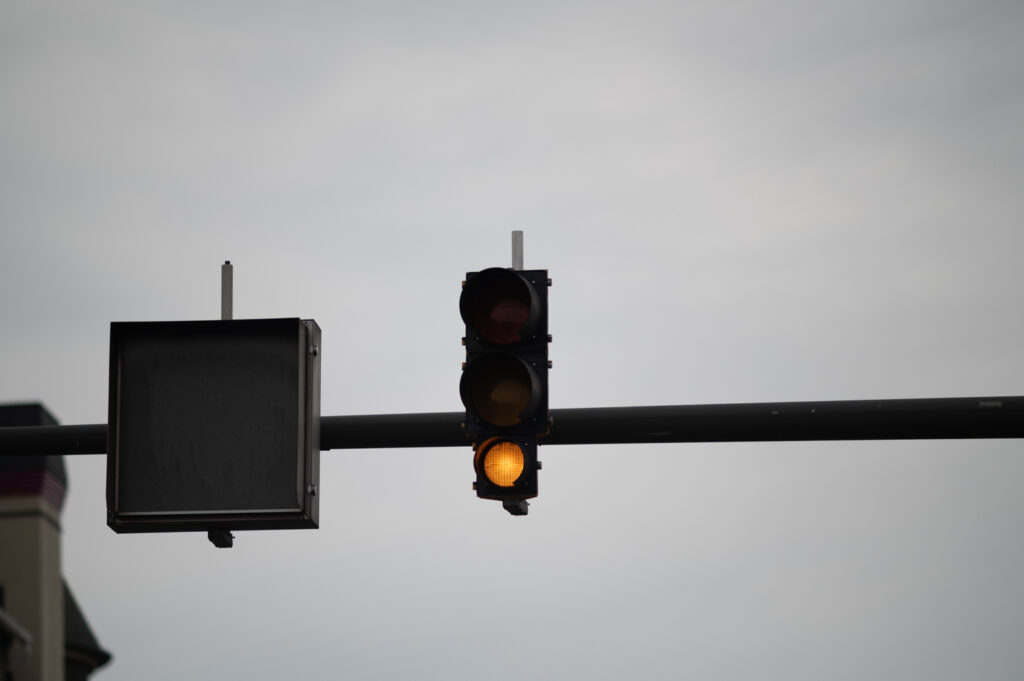
A dark traffic signal against a bright cloudy sky would produce loads of chromatic aberration with Nikon’s version. I don’t really see any with this Zeiss lens. This is shot wide open so there is some vignette around the corners. This is really only noticeable when shooting against bright backgrounds such as this sky.

Backgrounds simply melt away at 180mm and f2.8. The accurate color reproduction keeps white background bokeh white, without the need for adjusting sliders in post. Something about this effect in combination with the lack of CA lends itself to that elusive “Zeiss 3D pop” quality.
Below is f2.8 vs f8, with a caveat:
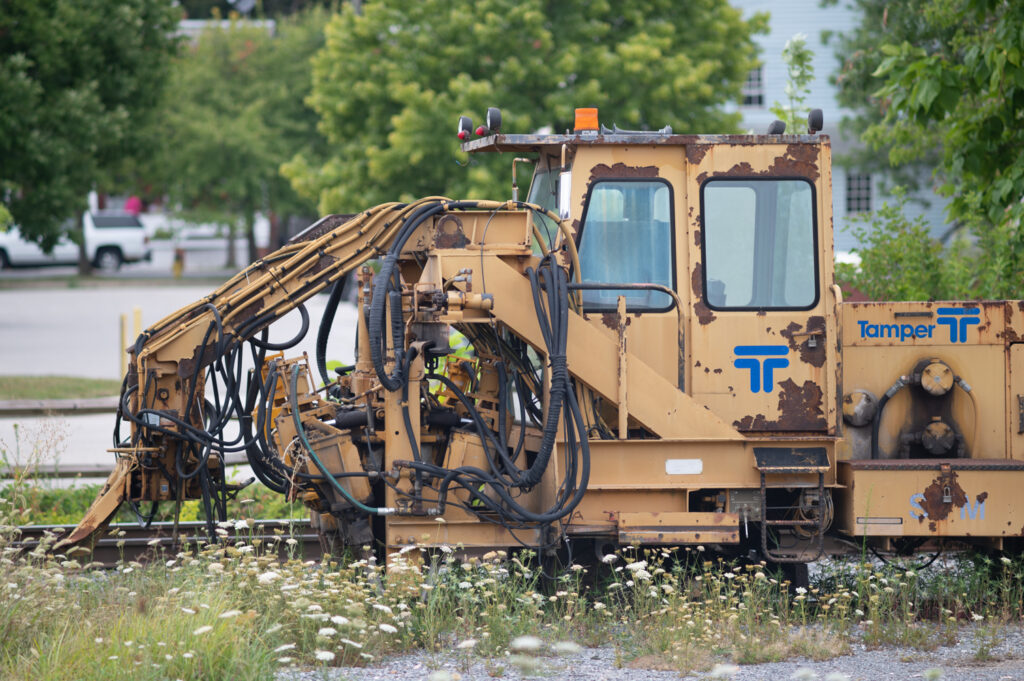
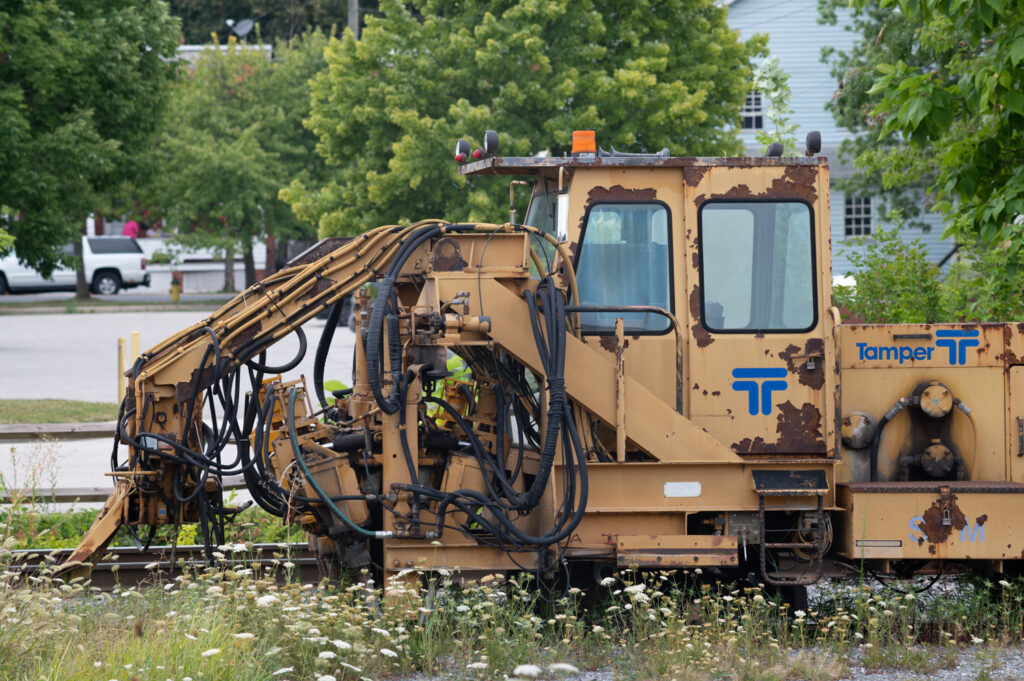
The rusty yellow piece of railroad equipment above is my attempt to show that there’s not really a need to stop down this lens unless you need more depth of field or the conditions are too bright for f2.8. The colors appear slightly richer in the f8 version but here’s the caveat. There is no manual or electronic connection to the camera so the camera is trying to measure exposure through the small iris of f8. This means the difference above could be from slightly different exposures between the two images, in addition to the higher contrast that typically comes from stopping down a bit. Whether you’re shooting at f2.8 or some other aperture, the resolution is outstanding. I’d say it also beats the Nikon for pure resolving capabilities, in addition to color and lack of CA.
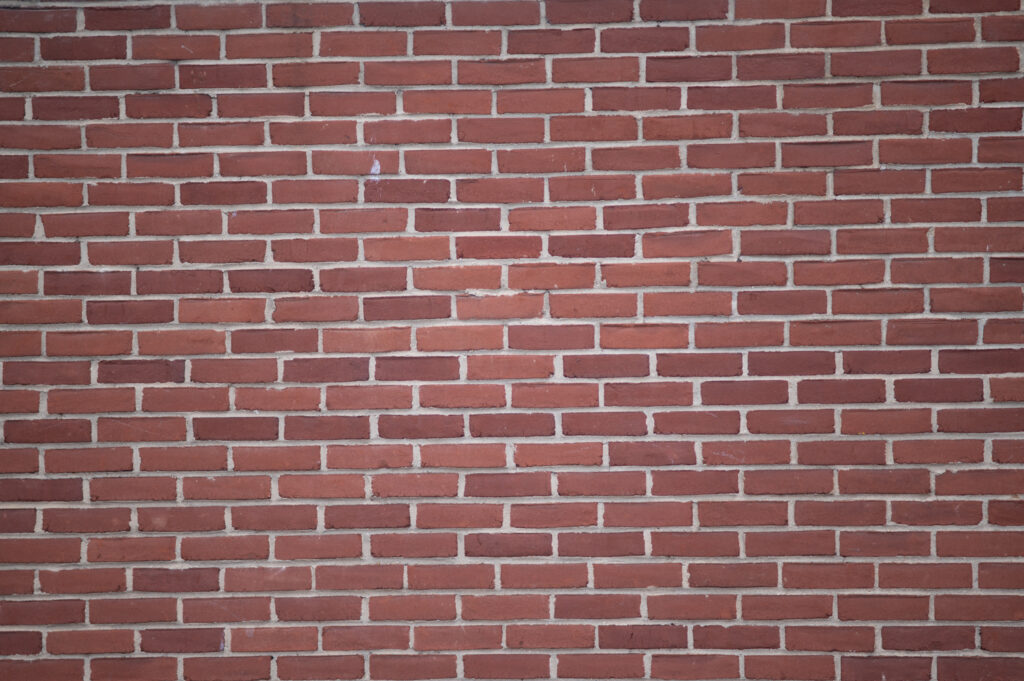
The obligatory brick wall test. Slight vignetting at f2.8. Much less than the CONTAX Zeiss 28-85mm that I typically walk around with. Below are a few more unedited images from today’s walk.

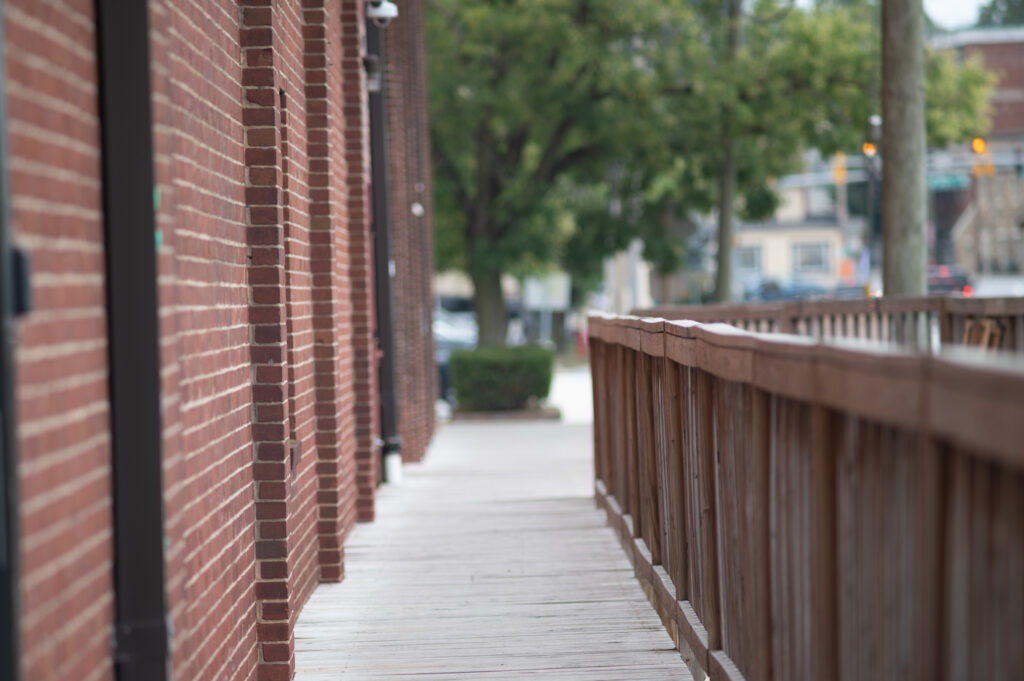


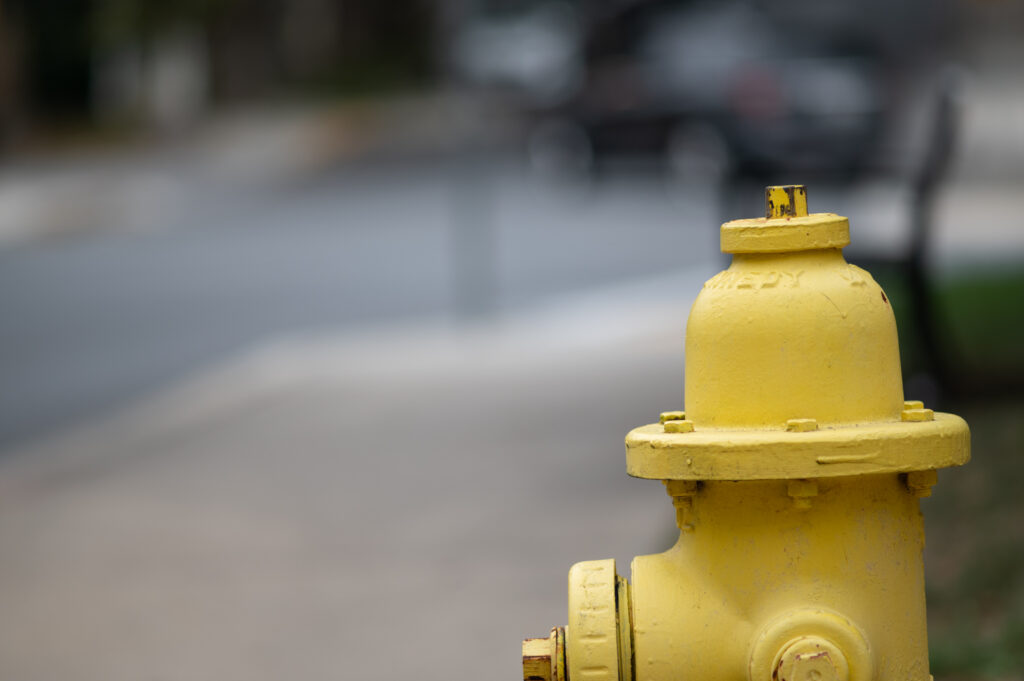

So, are there any problems with this lens?
I don’t know why this lens doesn’t command a higher price, but if I had to guess I’d say it’s because of the long focus throw. It takes me about 2.5 twist to cover the full range from MFD to infinity. This allows for very accurate focus but it also makes this lens very difficult to use for action, even if you’re a pro at manually focusing. It just takes a while to move around the focal range. That’s not a deal breaker for me since I primarily use the lens for portraits.
